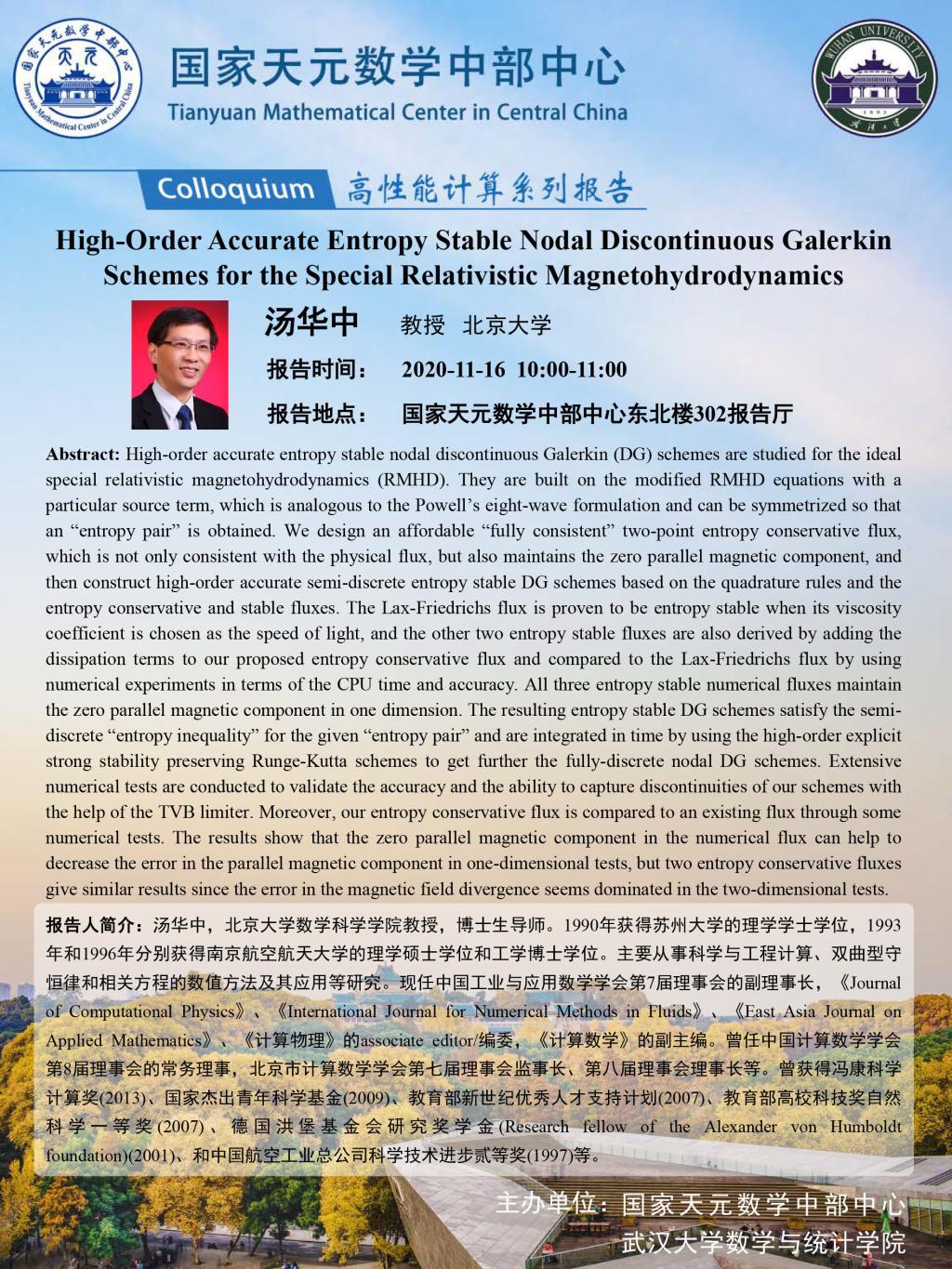报告题目:High-Order Accurate Entropy Stable Nodal Discontinuous Galerkin Schemes for the Special Relativistic Magnetohydrodynamics
报告时间:2020-11-16 10:00 - 11:00
报告人:汤华中 教授 北京大学
报告地点:国家天元数学中部中心东北楼302报告厅
报告摘要:
High-order accurate entropy stable nodal discontinuous Galerkin (DG) schemes are studied for the ideal special relativistic magnetohydrodynamics (RMHD). They are built on the modified RMHD equations with a particular source term, which is analogous to the Powell’s eight-wave formulation and can be symmetrized so that an “entropy pair” is obtained. We design an affordable “fully consistent” two-point entropy conservative flux, which is not only consistent with the physical flux, but also maintains the zero parallel magnetic component, and then construct high-order accurate semi-discrete entropy stable DG schemes based on the quadrature rules and the entropy conservative and stable fluxes. The Lax-Friedrichs flux is proven to be entropy stable when its viscosity coefficient is chosen as the speed of light, and the other two entropy stable fluxes are also derived by adding the dissipation terms to our proposed entropy conservative flux and compared to the Lax-Friedrichs flux by using numerical experiments in terms of the CPU time and accuracy. All three entropy stable numerical fluxes maintain the zero parallel magnetic component in one dimension. The resulting entropy stable DG schemes satisfy the semi-discrete “entropy inequality” for the given “entropy pair” and are integrated in time by using the high-order explicit strong stability preserving Runge-Kutta schemes to get further the fully-discrete nodal DG schemes. Extensive numerical tests are conducted to validate the accuracy and the ability to capture discontinuities of our schemes with the help of the TVB limiter. Moreover, our entropy conservative flux is compared to an existing flux through some numerical tests. The results show that the zero parallel magnetic component in the numerical flux can help to decrease the error in the parallel magnetic component in one-dimensional tests, but two entropy conservative fluxes give similar results since the error in the magnetic field divergence seems dominated in the two-dimensional tests.
